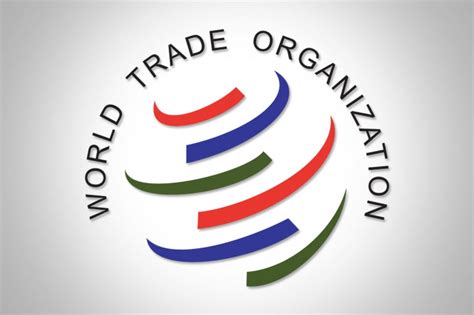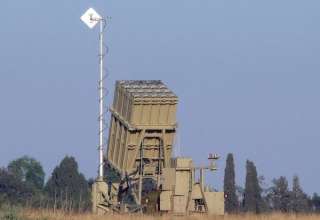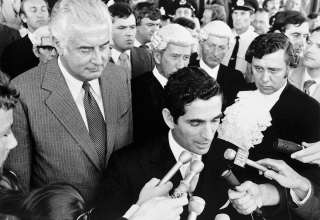By Brian Boyd
This is the second of a two part-series
Rival trading blocs emerging
Privately most major nation states are acknowledging that global trade is becoming dysfunctional. At the macro level that WTO has become powerless to prevent or even slow down the fracturing of the long-running, international ‘rules-based order’.
On a regular basis China and the US exchange retaliatory tariffs. The new economic model emerging, sees the US’s ‘protectionist legislation’, which provides massive subsidies to key US industries, being deemed openly as a “fragrant breach of WTO rules”, as is the state-directed mercantilist policies, and multi-layered and opaque subsidies, of China.
The US White House and China’s central planners are orchestrating big increases in investment in their respective manufacturing sectors. Both great powers are indulging in non-market practices, which have our flow on impact on many countries including Australia. “Both the United States and China are using large government subsidies to stoke economic growth and try to dominate what they believe will be the most important global markets of this century…” (AFR 20/4/24).
Since World War II the US has developed its own sphere of influence, treaties and alliances. China had has its sphere of influence with economic relationships with an increasing number of countries. Other great power centres, for example the EU, Russia, Britain and India strive to have their own economic ‘spheres’. There is much overlapping, negotiations and shakedowns.
Regardless, the fracturing of global trade into blocs, sees uncertainty continue to grow. It is conceded that the world’s “small-fry countries” can no longer be protected “from a might-is-right, law-of-the-jungle system”.
The increasing array of non-market policies and practices, are a direct consequence of great power rivalry. The US insists it is fighting for ‘global free trade and fair competition’ while China argues that it wishes to see ‘a multi-polar world without economic discrimination’.
The arms race is the result.
The driver is – economics
The economic backdrop of great power rivalry is generating the current wave of flashpoints and hotspots in key parts of the world. A bevy of right wing think tanks and so-called expert commentators do not want the public to realise this essential link. They repetitively generate a narrow narrative focused on security and interference issues, in isolation.
For example, it is not just certain great powers gathering both economic and military intelligence worldwide. ALL indulge in this practice as part of their economic aspirations in preserving and extending their respective spheres of influence.
In a recent commentary (The Australian, 3/6/24), Alexander Downer reported the Hoover institution at Stanford University, had recently held a symposium comparing the so-called Cold War period-1945 to 1992 with today’s geopolitical environment. It was strongly suggested that today’s era is “more dangerous than the most tense periods of the Cold War”.
Referring to the former period he wrote, “There were two dominant powers who were determined to avoid yet another world war. Today there are more than two competing great powers. We don’t live in a bipolar world… Today we have a multipolar world.”
It was suggested that all of these countries today are driven by “territorial ambitions”, with some of them determined to challenge “American power and influence”.
“This is a world more akin to before 1914. Then, as now, there were several great powers divided less by ideology than competing territorial ambitions. Great Britain, Germany, Austria-Hungary, France and Russia all sought to maintain or expand their imperial reach”, Downer wrote.
Two recent books explore the economic essence of what lays behind much of the world’s increasing tensions.
In his book: ‘The shortest history of economics’, Andrew Leigh explores “the hidden economic forces behind war… and [the] forces that shape our world”.
In her book: Vulture capitalism: corporate crimes, backdoor bailouts and the death of freedom’, Grace Blakeley ‘takes on the world’s most powerful corporations. She argues all over the world democracy and competition have been replaced with oligarchy and monopoly, and what is left is corporatotocracy [and] societies governed by a tight-knit cartel of big monopolies, financiers, states and international institutions.’
The current level of escalating rivalry could lead to even broader geopolitical conflict. In simple terms it is clear the US “worries far less about being a stabilising force in the global economy and far more about pursuing its own narrow economic interests.”
Some commentators are pointing to “an emerging and commercially powerful” anti-US alliance of major powers (including China and Russia) that is becoming one of the most “important developments of our time”, [The Telegraph, London, May 25, 2024].
One commentator openly suggests that “America’s departure from its post-World War II free-trade principles offers China a golden opportunity”, adding the “World Trade Organisation, World Bank, International Monetary Fund and the Organisation for Economic Co—operation and Development will find it almost impossible to discourage member countries [from choosing] to emulate the US with their own opportunistic tariffs and subsidies”. The commentator points to the beginning of the US tariff wars against China several years ago being continued, with the addition in 2023 onwards, of “massive subsidies”, provided to US multinationals and corporations from the government. He speculated on how the fabric of global economic rules will survive through the 21st-century, “remains to be seen”, concluding: “Whatever emerges, history will recall the Trump-Biden era as a turning point in world economic affairs”.[Gary Hufbauer, A N U, AFR,/6/24].
State of play
It is important for the Australian public to recognise the economic essence and basis of world tensions today. In particular the repetitive talk of potential war breaking out, without this being acknowledged.
Many right wing media commentators and some so-called national security think tank experts are desperate to promote a narrative that such tensions are only about security and military threats.
This narrow focused narrative is all about generating public angst in order to support war and conflict in the interests of one superpower over another, or one grouping of great powers over others. The pro-war hawks hope such a kinetic conflict will solve the economic competition in favour of their preferred power bloc.
These so-called pro-war experts know that the public will have no appetite for war and its dire consequences, if the truth is conceded that such conflict will be essentially over which country’s multinationals, state-based enterprises, corporations or crony capitalists become the ultimate winners!
A number of the pro-war hawks are already lamenting why Australian young people are not flocking to join our Armed Forces. They ignore that the use of lies and misinformation for the justification for many previous conflicts from Vietnam to Iraq are now more widely known and understood. Never mind the official inquiries that have revealed the mal-treatment and lack of support for our veteran soldiers on their return from such conflicts.
Right to know
It seemed a positive development that in early 2024 the respective governments of the US, China and Russia were seeking to improve their military to military communications, with the public aim of avoiding conflict breaking out over miscalculations and misunderstandings.
However our Australian government seems determined not to respond in any way to the repetitive speculation in the media, that conflict between the US and China remains a real possibility. With the potential military impact on the Australian continent, the public has a right to know what is actually going on.
There is much reporting for example on the lack of preparedness of the Australian Defence Force, especially with the knowledge that the much heralded A U K U S ‘defence pact’ will not deliver any real modern weaponry for years to come, some of it if ever.
The office of the Prime Minister, the office of Defence or the office of Foreign Affairs will not explain the contradiction between this ‘ill-prepared’ scenario and the often repeated insistence that Australia is now facing its ‘most serious geo-political threat since World War II’.
At the same time the federal government insists the relationship between Australia and China is “renewed” and “back on track”.
But the public is also informed: “Australia is now faced with a regional environment in which most of the most pressing geopolitical, security and economic issues are increasingly framed by Beijing and Washington in a competitive, almost zero-sum way, which will leave diminishing space for middle and smaller powers to manoeuvre” and the “core problem” impacting on the government’s desire for “equilibrium” in our region, is that “the conditions” to see “uncontested US primacy in the Asia-Pacific and Chinese moderation of its ambitions-no longer hold”.
The government is silent on all such speculation and commentary.
The KEY question for Australia
If there is genuine dialogue between Canberra and Beijing as claimed, especially involving the A D F and P L A, then there is a key question for the Chinese that has to be asked and the public of Australia need to be informed of the answer. And that question of course is-if actual kinetic war breaks out between the US and China will the US military and intelligence assets on Australian soil become nuclear targets?
Sorting out ‘rules of engagement’ over Australian and Chinese military assets shadowboxing in the South China Sea of course should be addressed, but this is not our nation’s core defence issue.
If the federal government is genuine about protecting the Australian continent and sovereignty during war, then this key question must be answered.
The US has expanded its military and spy operations in recent years in Australia e.g. Pine Gap, North West Cape, Australian airfield expansions (Tindale RAAF base) that are used by US B-52 and Stealth bombers, US nuclear powered and armed submarines using our naval bases (HMAS Stirling), not to mention thousands of US military personnel rotating through the Top End.
This question must be asked. Australians have a right to know.






